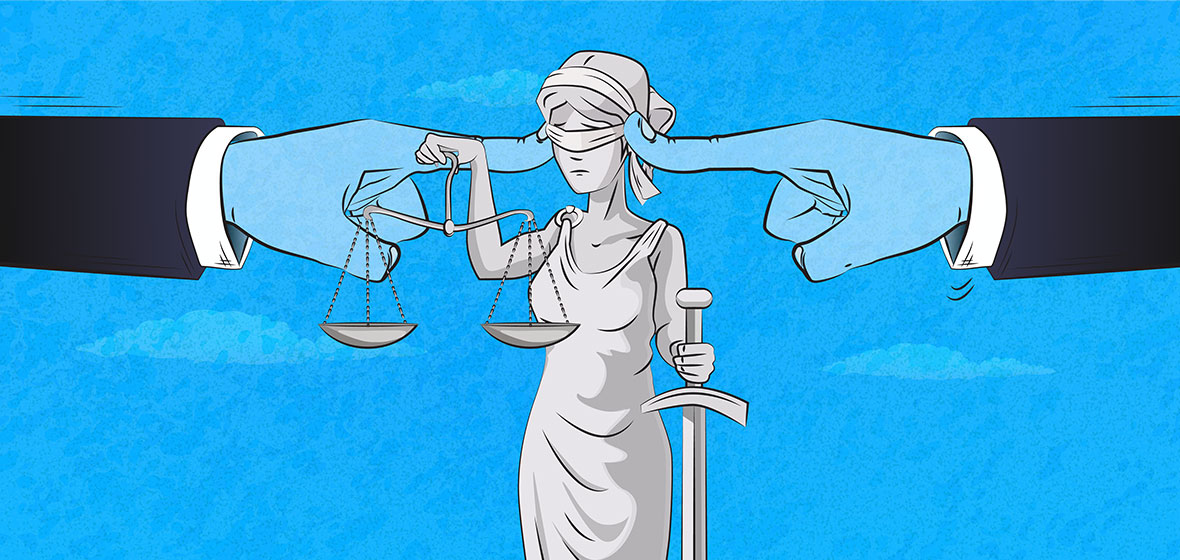There is a famous courtroom scene in the 1997 film Liar Liar. In the movie, Jim Carey plays the role of Fletcher Reede, a lawyer and a father who is, well, pretty good at lying and apparently, this is the only skill he relies on to be a successful divorce attorney. That is until his son’s birthday wish for his dad not to lie for a day is granted.
Robbed of his talent, Fletcher struggles to perform in the courtroom. What follows is a hilarious meltdown of epic proportions but somehow ends with Fletcher winning his case. However, after realising he is morally on the wrong team, he attempts to change the judge’s ruling. A screaming match ensues between the judge and Fletcher, who is ultimately held in contempt, dragged out of the courtroom, and thrown in jail.
Yes, this is Hollywood and made for entertainment, but the issue of contempt of court is very real and a serious one at that. But what is contempt and what are the key differences between Australia and the US?
Contempt of court refers to any act or omission that disrespects, disobeys, or obstructs the authority or dignity of a court of law. This can take many forms, from disruptive behaviour in the courtroom to refusing to comply with a court order.
Justin Wong, Principal Lawyer at Streeton Lawyers, explains that it is “a broad concept, and can include what is sometimes called contempt in the face of the court, contempt by publication or sub judice contempt, breaching an order or undertaking, or interfering with witnesses.”
“This might be throwing something in a court room, refusing to take an oath or answer questions, threatening a legal practitioner or judge, or sometimes even an inappropriate exchange between counsel and the bench,” he says.
A person who is found to be in contempt of court is known as a contemnor and their actions must be proven beyond a reasonable doubt to be deliberate. “There needs to be some intention on the part of the contemnor, but that doesn’t always mean an intention to interfere with the administration of justice,” Wong says.
In Australia and the US, contempt of court is a serious offence. However, there are some notable differences in how it is defined, prosecuted, and punished in each country.
In Australia, it is primarily a common law offence while in the US it is often codified in state or federal statutes. The scope of contempt may vary depending on the jurisdiction, but it generally includes similar actions as those in Australia.
Both countries distinguish between civil and criminal contempt. Civil contempt occurs when someone fails to comply with a court order and is intended to coerce compliance. Whereas criminal contempt involves actions that directly obstruct the administration of justice or show disrespect for the court’s authority.
In Australia, the sub judice rule restricts public commentary on active cases to avoid prejudicing proceedings
But what about freedom of speech? The US, with its First Amendment protection, tends to be more cautious about punishing speech-related contempt, requiring a clear and present danger to the administration of justice.
However, in Australia the sub judice rule restricts public commentary on active cases to avoid prejudicing proceedings. While similar concerns exist in the US, the application is less stringent.
In 2019, Victoria’s contempt of court laws came under scrutiny after 36 journalists and media organisations were charged with contempt for allegedly violating suppression orders in DPP v Pell [2019]. In this instance, the media, which had spent nearly three months documenting the case, was barred from reporting on what it had heard or saw in the courtroom as Cardinal George Pell was to face a second trial on further charges.
Wong tells LSJ that in Australia, the most serious form of contempt is contumacious contempt. This involves wilful contempt in defiance of the court, a conscious defiance of the authority of the court, or a case where the behaviour of the contemnor has been shown to be aimed at the integrity of the courts and designed to degrade the administration of justice.
When it comes to penalties, in Australia it is typically prosecuted summarily, and penalties can range from fines to imprisonment.
Wong says jurisdictional limits can limit the penalty. In the District Court, the maximum penalty is a fine not exceeding 20 penalty units and imprisonment for 28 days. Alternatives to full-time custody, such as suspended sentences, can also be imposed.
“[The District Court] has its power via statute…the sections [in District Court Act 1973 No 9] govern the maximum penalty,” Wong says.
“The Supreme Court is different because the power to proceed for contempt lies in the inherent jurisdiction of the Court.”
In the US, there’s a right to trial by jury for serious criminal contempt cases, a safeguard not always present in Australia. Civil contempt is often initiated by a private party, while criminal contempt is usually prosecuted by the government. Penalties can vary depending on the jurisdiction and the severity of the offence, but they can include fines, imprisonment, or both.
However, it would be a very extreme and rare example for a sentence of imprisonment to be imposed in both countries.
“You have to remember that proceedings for contempt are considered an option of last resort. Before proceedings for contempt are commenced, courts generally have regard to whether alternatives might be appropriate. For example, removing the person from the court, giving a warning, or referring the behaviour for complaint in the case of a legal practitioner,” Wong says.




